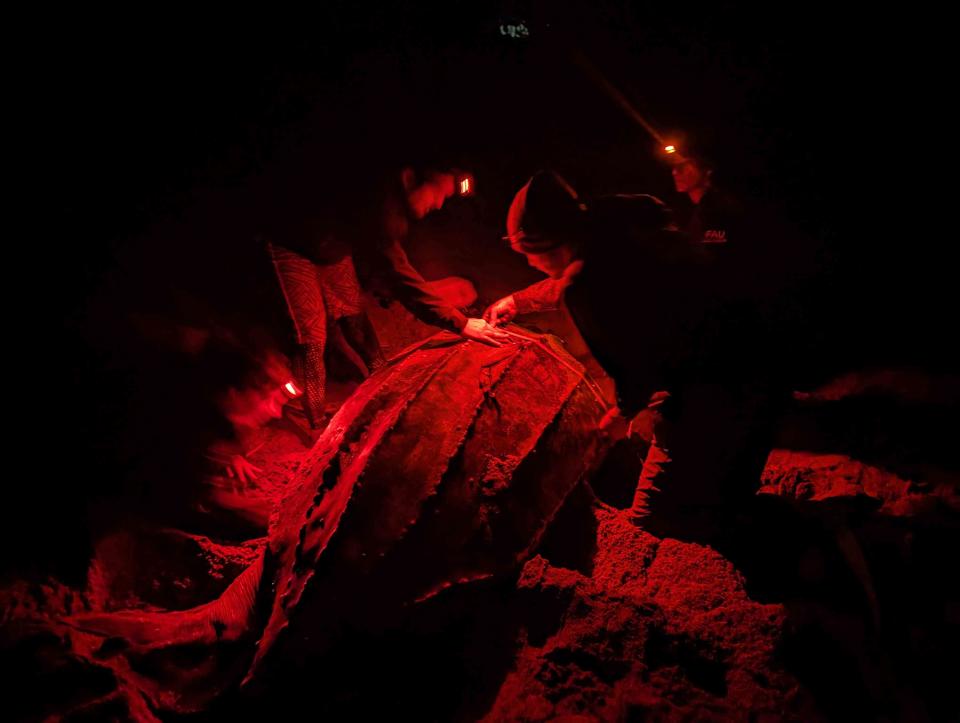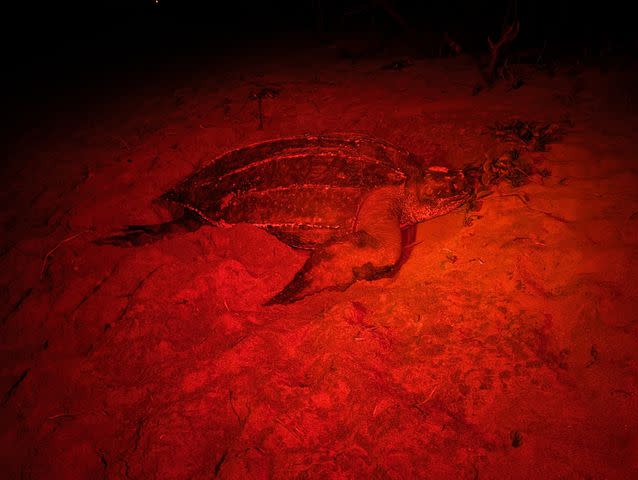Giant 1,000-Pound Leatherback Sea Turtle Returns To Florida Beach To Nest
Bootes has been nesting on Juno Beach for 23 years.

Loggerhead Marinelife Center
A "local legend" returned to Juno Beach, Florida, to help kick off sea turtle nesting season last week.
Researchers from Loggerhead Marinelife Center (LMV) spotted Bootes, a 1,000-pound leatherback turtle, nesting on the Palm Beach County beach Thursday night.
Bootes (pronounced "Boh-Tees") has been nesting on Juno Beach for a staggering 23 years. She is one of the 10 largest leatherback sea turtles ever recorded by LMC.
Researchers illuminated the scene with a special red light that is less intrusive to nesting sea turtles and hatchlings. They took photos of Bootes, studied her movements, and observed her physical condition before she returned to the Atlantic.

Loggerhead Marinelife Center
Leatherbacks are the largest turtles on Earth, growing up to seven feet long and exceeding 2,000 pounds. They can live up to 45 years in the wild and are the only sea turtle species without a shell and scales.
According to the National Oceanic and Atmospheric Administration (NOAA), the leatherback sea turtle is currently listed as endangered under the Endangered Species Act. It's estimated that the global population has declined 40 percent over the past three generations.
The nesting season for leatherback sea turtles runs from March to July. Female leatherbacks nest every two to four years. The eggs incubate approximately two months before leatherback hatchlings emerge from the nest.
Under natural conditions, roughly 10% of hatchlings will be eaten by predators on the beach. Only about 25% of those that make it to the ocean will survive the first few days in the water. Only 6% of those will last the first year.
As nesting season takes place on beaches all over the South, residents and visitors are asked to help protect sea turtles by cleaning up after trips to the beach, filling in holes, knocking down sandcastles, and most importantly, by keeping lights off at night.
For more Southern Living news, make sure to sign up for our newsletter!
Read the original article on Southern Living.

